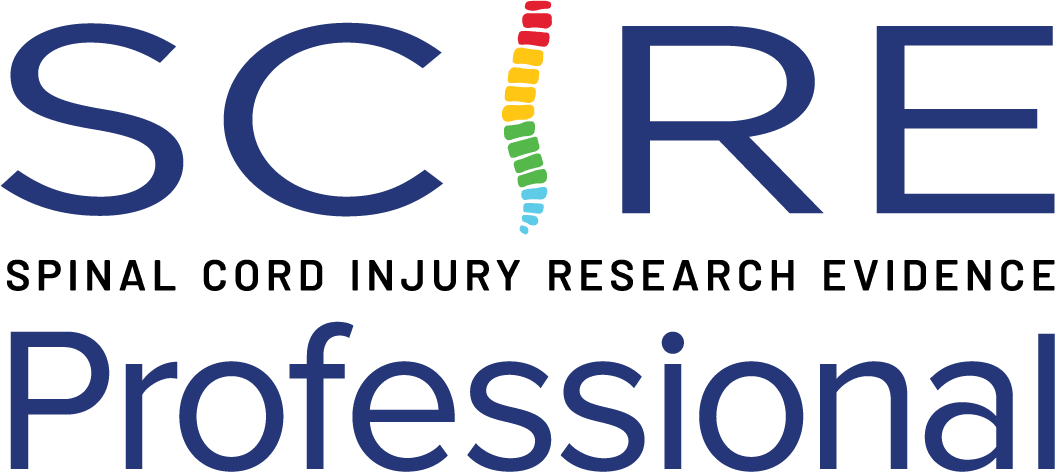Cellular Transplantation Therapies
Experimental animal research utilizing stem cells and other cells or tissue to treat severe SCI is now being translated to human clinical studies. Recent systematic reviews have been published assessing the evidence of different stem cell transplantation therapies (from various sources such as bone mesenchymal stem cells, bone marrow mononuclear cells and umbilical cord-derived mesenchymal stem cells) (Chen et al. 2021; Liu et al. 2022; Xu et al. 2022) or, specifically, of mesenchymal stem cell therapy (Muthu et al. 2021; Xu & Yang 2019), to help increase motor function and reduce impairments in the recovery of people with chronic SCI.
Safety and efficacy of stem cell treatment in SCI have not yet been established, particularly with regard to the improvement of walking. In a meta-analysis, Xu and Yang (2019) found 11 studies using mesenchymal stem cells treating 499 patients with SCI. Although no gait outcomes were assessed, results were mixed; significant improvements of total AIS grade, ASIA sensory score and reduction of residual urine volume were observed in experimental groups versus control groups, but there were no changes in motor scores nor in ADL scores (Xu & Yang 2019). Though no serious or permanent adverse events occurred, the experimental groups were 20 times more likely to experience toxicity than those in the control groups; common AEs like fever, headache, backache, and abdominal distension usually resolved spontaneously or post-treatment (Xu & Yang 2019; RR: 20.34; 95% CI 8.09–51.18, P < 0.001).
Discussion
We found three studies assessing the effects of cellular transplantation in people with SCI where walking outcomes were measured. In an RCT, Albu et al. (2021) tested the effects of cellular transplantation on muscle strength and independence in 10 people with AIS A thoracic level SCI. Participants either received a single dose of intrathecal ex vivo-expanded Wharton jelly mesenchymal stromal cells (MSC) from human umbilical cord or a placebo injection (Albu et al. 2021). Participants in the experimental group showed a significant improvement in pinprick sensation in the dermatomes below the level of injury compared with those in the placebo group, but there were no significant changes in motor function or independence measures in either group (Albu et al. 2021). Specifically, change in pinprick sensation on the right side was significant at 3 months (P = 0.03) and at 6 months (P = 0.013), compared with baseline following WJ-MSC infusion, though no sensory changes were significant on the left side in either group. Improvement in pinprick score was not predicted by the level of spinal injury or time after injury. MEPs and SEPs from the lower limbs were absent at baseline and 6 months after either MSC or placebo infusion.
One case control study investigated the effects of monthly intrathecal injections of mesenchymal cells in combination with 6 months of rehabilitation therapies on muscle strength and function (Kishk et al. 2010). There were no differences between groups for functional ambulation; motor scores were only slightly (but significantly) greater in the treatment group.
In a pre-post study, olfactory mucosal autografts were transplanted into the site of injury in persons with chronic complete or motor-complete SCI (Lima et al. 2010). Patients then underwent LT (either robotic-assisted treadmill training or assisted OWT). FIM and WISCI II scores improved in 13 participants tested, and this improvement correlated with increases in leg strength. However, as this was an uncontrolled pilot study, it is impossible to attribute improvements to mucosal grafts or to the extensive walking training (average of 24-39 hours/week for a median of 4 months).
Multiple participants in both Kishk et al. (2010) and Lima et al. (2010) experienced adverse events (AEs). In Kishk et al. (2010), the adverse effects of injections included spasticity (which occurred significantly more often in the treatment group) and 24 and the 43 participants developed neuropathic pain. One participant with a history of myelitis developed encephalomyelitis after their third injection and was forced to withdraw from the study. In Lima et al. (2010), 5 of 20 participants experienced AEs including one person with aseptic meningitis, and another with irritable bowel syndrome.
Further pre-clinical studies are needed to establish safety and efficacy of cellular transplantation, and subsequently in randomized controlled trials in humans, before they can realistically be recommended for rehabilitation. For a more in-depth and plain language description of stem cell treatment in SCI, visit Stem Cells in SCI on SCIRE Community.
Conclusions
There is level 1 evidence (from 1 RCT: Albu et al. 2021) that the administration of a single dose of intrathecal ex vivo-expanded Wharton jelly mesenchymal stromal cells from human umbilical cord did not provide any improvements (compared with placebo) on motor function or independence of patients with chronic complete SCI.
There is level 3 evidence (from 1 case control study: Kishk et al. 2010) that monthly intrathecal injections of mesenchymal cells in combination with 6 months of rehabilitation therapies provided significantly greater improvements in motor scores, but not in functional ambulation in participants with chronic SCI, though multiple participants experienced adverse events like spasticity and pain.
There is level 4 evidence (from 1 pre-post study: Lima et al. 2010) that the implantation of olfactory mucosa autografts in combination with LT could produce some AEs, and could improve FIM and WISCI, in correlation with leg strength in patients with chronic, sensorimotor complete or motor complete SCI.
